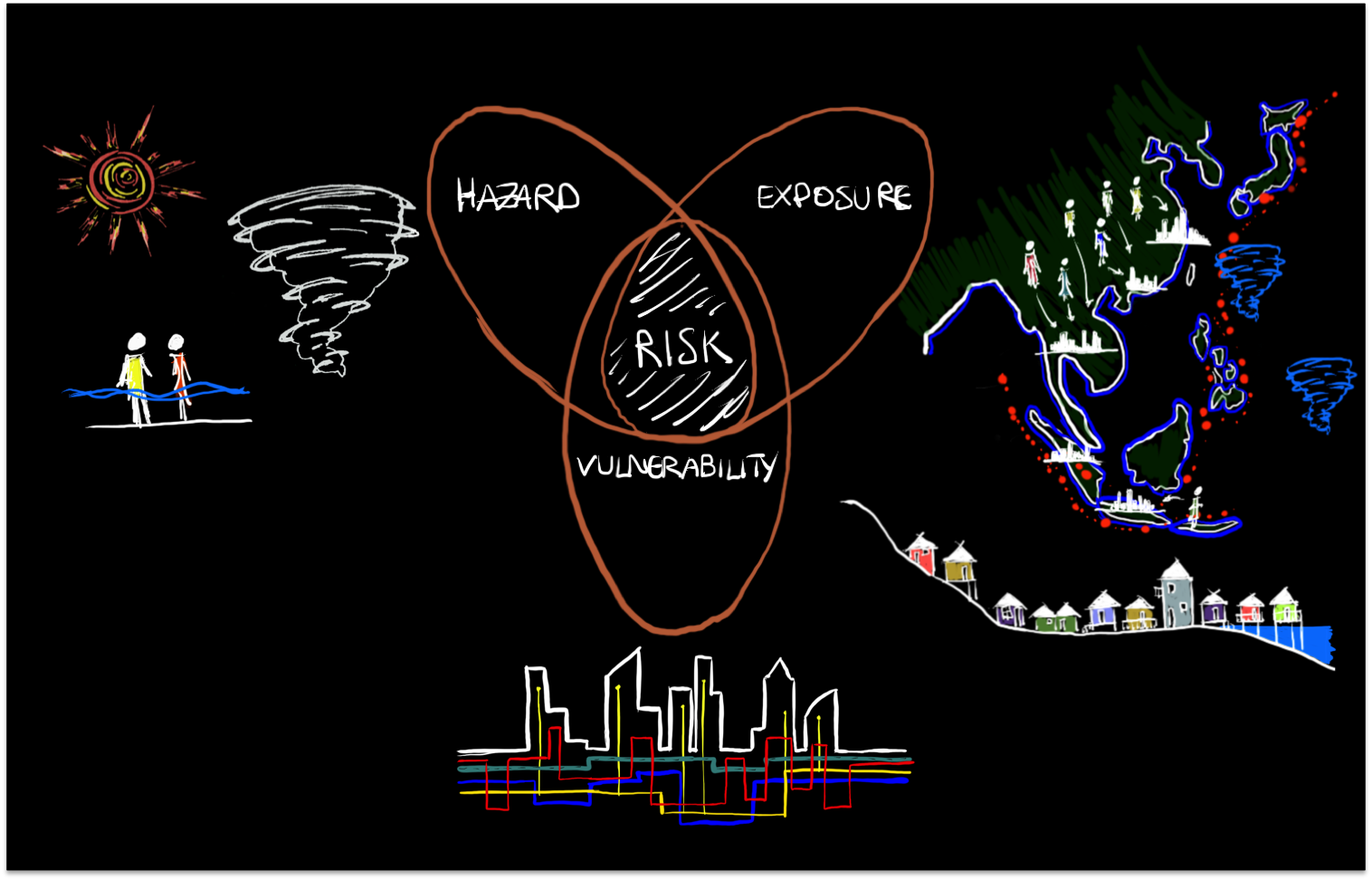“Natural Hazards, Un-natural Disasters” – On Hurricane Irma, Harvey and Others

There is no such thing as a natural disaster, only natural hazard. That’s because the impact of hurricanes, earthquakes and other hazards is determined not by the size and intensity of such events, but by the extent to witch our built environment is exposed and vulnerable to them.

Risk is the combination of Hazard, Exposure and Vulnerability. Graphic developed by David Lallemant.
What does it mean when it comes to disasters such as Hurricane Irma and Hurricane Harvey? Here are some simple lessons:
(1) We need to control our hazard exposure: Massive development of coastal areas and within well-documented flood-plains is not a good idea. Urban planning, risk-informed zoning, protection of natural protective barriers (e.g. wetlands) are all integral to developing resilient communities. The unrestrained development practices of coastal communities in Florida and Texas are a major cause of the current impact. Not only has it led to a huge increase in exposure of infrastructure and people to storm surges and flooding, but the impacts are compounded due to the increase in non-absorbent surfaces (which further increase flooding).
Check out the Google Earth Engine timelapse along the Florida coast (or Houston) to see how these areas have expanded in the past few decades. These patterns of growth are policy-driven (or more often driven by a lack of policy), and many alternatives could have been followed to develop communities that are liveable, affordable and resilient. It is called urban planning.
Development of coastal zones in Florida (from Google Earth Engine)
By the way, these observations are not a surprise, and have been well-documented: See for example this Atlantic article on Houston’s flood risk from 2016 (1 year before Harvey): https://www.theatlantic.com/science/archive/2016/03/hell-and-high-water/472134/
(2) We need to increase the resilience of our infrastructure: Reducing vulnerability means investing in resilient infrastructure, to make sure that the systems we rely on as a society keep functioning (or quickly recover) following large hazard events. This includes maintaining and retrofitting existing infrastructure, ensuring that new infrastructure is resilient to the events of today and those numerous decades in the future (our infrastructure will last ~100 years), investing in protective infrastructure (both built and natural). Unfortunately, President Trump’s announcement (mere days before Hurricane Harvey!) to roll back the Federal Flood Risk Management Standard is exactly the opposite of sound policy for promoting resilient infrastructure. See these links for more information on the announcement and why it will make the US less resilient.
(3) We need to increase our social resilience: Vulnerable communities (poor, racial and ethnic minorities, children, elderly, etc) systematically suffer the largest burden of disasters. As many social scientists have documented, this is not accidental, but often the result of policy which puts the most vulnerable at highest exposure to hazards, and the erosion of social safety nets which would enable the most vulnerable to recovery effectively. This should be troubling to everyone.
(4) Risk is a political issue: It follows directly from my previous three points that disasters are not exogenous from politics and history. Disasters are the result of policy-decisions (or decisions to do nothing) regarding urban planning, infrastructure standards, social services and safety-nets, investment in research and much more. These are all issues at the forefront of current politics, and if we want to fight for more resilient, and equitably resilient communities (#justresilience), we must elect our officials accordingly.
All this also means that risk is not something that randomly happens to us; it is something that we choose (based on our own decisions), or is chosen for us (due to constraints imposed by circumstance or policy). We have the knowledge and tools to choose a resilient trajectory. Let’s do so.
** My research and work is on the mathematics of disaster risk analysis. Specifically I develop tools to analyse and predict the risk trajectory of cities.
One Response
A very nicely written piece! People often confuse natural disasters a lot with natural hazards. I guess the analysis of disaster risks also includes a temporal factor? Meaning to say, hazards might have different disaster risk profiles at different points of time?